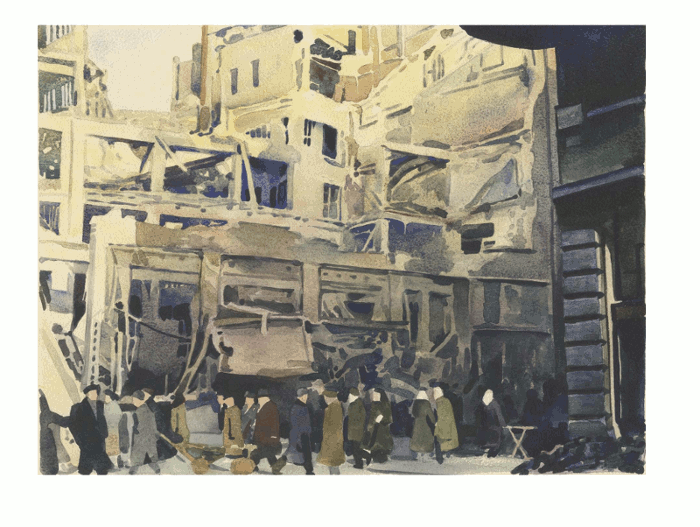
On occasion of the 60th anniversary of the 1956 revolution, the Hungarian National Museum calls on a particular group of artworks to present its visual impression, and to recall its most important events, sites, famous or nameless protagonists, either in a documentative or figurative way. The works exhibited include drawings, paintings, graphics series, posters and statuettes. These pieces of art were created in the heat of those fateful days (and later against it), inspired by the following long decades of silence. Even though history has been so far written by the victors, we believe in contemporary witnesses’ recollections, drawings and photographs which outlive and overwrite made-up history.
The exhibition does not only present works by Hungarian artists working in the country under tolerance or despite prohibition. They are complemented by some famous Western and Polish artists, and emigrants’ creations. About 280 such inspired works are showcased. These go from simple pencil or ball-pen sketches to more detailed ink drawings, up to masterly sieve prints, linoleum engravings, watercolours and oil paintings. To these, we add a few statuettes, coins and their dies, maquettes and designs of memorials, historically validated by the photographs, documents of the time, banners, graffitis and articles of personal use.
The aim of our historical exhibition is not only the individual presentation of autonomous works in a history of art context (although comparison and consideration of certain picture types and motif use alone could lead artists to precious insights). Instead, we try to figure out how well these art pieces are suited to give us a visual point of reference to evoke the events of those legendary days. Then, how they convene the celebration of collective national conscience born at that time, and how it survived like an underground stream despite being persecuted and dissected to its core.
This particular gallery can be seen in a composite installation united with the interiors of the Kádár retorsion. Fine art pieces, as an inside-out “exhibition inside an exhibition”, are placed around the walls of the halls as a gallery lining the whole path. In front of this “hidden” art show is the “cover” of three-dimensional manifestation of denial and oblivion, declared on the repressed revolution and shown about itself by the Kádár regime.
In the last hall, the pictures evoking memories of 1956 are finally free of previous prohibiting or disturbing circumstances. They are presented from after the official historical reinterpretation of 1956. With it came the moving exhumation of martyrs buried in the guarded and forbidden parcel no. 301, due to a contest for a memorial called by the National Cemetery. Now 1956 can be “seen” as it was on 16 June 1989, the day of the reburial. The moment was felt by society finding itself again as extremely uplifting.







